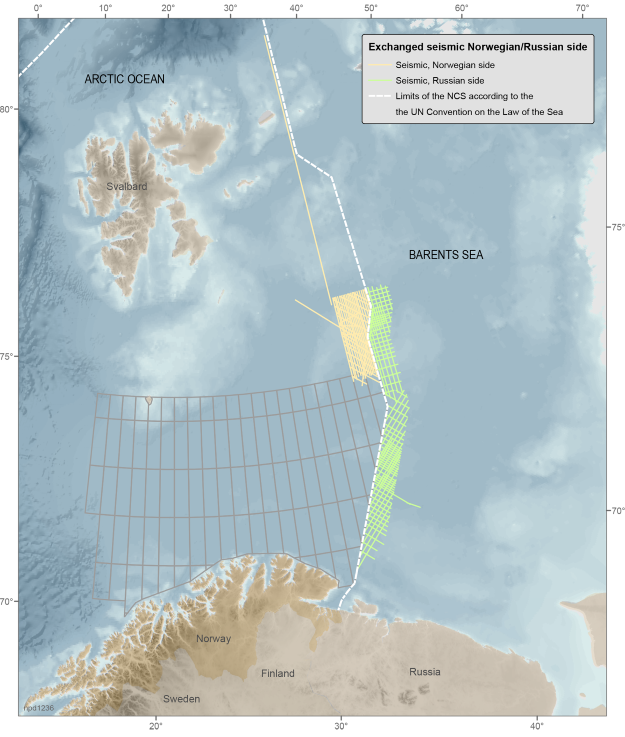Russia and Norway to Exchange Seismic Data
The Norwegian Petroleum Directorate (NPD) and Russian petroleum authorities (Federal Subsoil Resources Management Agency, Rosnedra) have entered into an agreement to exchange seismic data from the areas around their joint demarcation line in the Barents Sea.
Rosnedra initiated the data exchange about two years ago. Russian and Norwegian authorities will exchange about the same volume of data.
In May, Norway awarded 10 licenses for new exploration areas, which for the first time involved the offshore border zone in the Barents Sea.
Rystad Energy predicts that production in the Barents Sea will grow considerably. The first growth phase will be in 2016/2017 as production at the Goliat field ramps up. The next growth phase will be in the beginning of the next decade with the anticipated startup of Castberg, Wisting and Alta/Gohta.
.jpg) The growth in production will be driven by oil, as the latest discoveries have been oil discoveries. To achieve this production growth substantial investments are needed, says Rystad. Historically, annual investments for the Barents Sea have been just below $2 billion. After 2020, this number is expected to grow and reach above $8 billion.
The growth in production will be driven by oil, as the latest discoveries have been oil discoveries. To achieve this production growth substantial investments are needed, says Rystad. Historically, annual investments for the Barents Sea have been just below $2 billion. After 2020, this number is expected to grow and reach above $8 billion.
Russia is the world's largest producer of crude oil (including lease condensate) and the second-largest producer of dry natural gas.

Russia and Europe are interdependent in terms of energy. Europe is dependent on Russia as a source of supply for both oil and natural gas, with almost 30 percent of European Union crude imports and more than 30 percent of natural gas imports coming from Russia in 2015. Russia is dependent on Europe as a market for its oil and natural gas and the revenues those exports generate. In 2015, almost 60 percent of Russia's crude exports and more than 75 percent of Russia's natural gas exports went to Europe.
Sanctions over Russia’s involvement in the Ukraine and lower oil prices have reduced foreign investment in Russia's upstream, especially in the Arctic offshore. ExxonMobil, Eni, Statoil, and China National Petroleum Company all partnered with Rosneft in 2012 and 2013 to explore Arctic fields, but virtually all involvement in Artic offshore projects by Western companies has ceased following the sanctions.
Data Exchange

From the Russian side, the data includes all seismic that was collected in 2013 in two major licenses: the Fedynsky license and the central Barents Sea license, in a zone that is 50 kilometers from the demarcation line. There will also be a line from the gas discovery on the Kildinskoye High. The NPD has received a total of 6,500 kilometers of 2D seismic from these areas.
Rosnedra has received 5,900 kilometers of 2D seismic from the Norwegian side. This includes seismic data that the NPD collected in the northern Barents Sea in 2012, 2013, and 2014, limited to east of 35°E and south of 76°10N. The Russians will also receive a seismic line from the stratigraphic boreholes on the Sentralbank High, as well as a long line that spans north to south in the Arctic Ocean.
